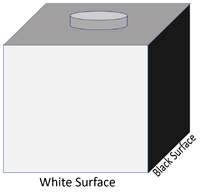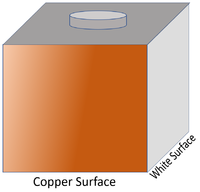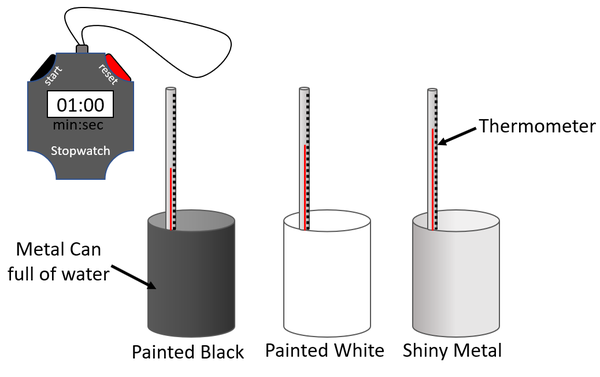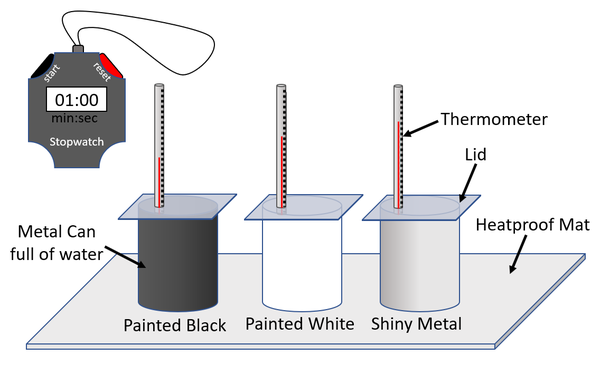GCSE Physics Required Practical: Investigating Infra-red Radiation
Contents
Key Stage 4
Meaning
Investigate the relationship between the colour and reflectivity of a surface with the intensity of Infra-red emission.
Experiment 1: Leslie Cube
Variables
- Independent Variable: The colour and reflectivity of each surface on the Leslie cube.
- Dependent Variable: The temperature measured using an infra-red thermometer.
- Control Variables: The volume of the water in the Leslie cube. The temperature of the water. The distance between the infra-red thermometer and the Leslie cube.
Method
| A diagram showing several sides of a Leslie cube. | ||
- Pour hot water into the Leslie cube until it is full.
- Use a ruler to measure 10cm from one surface of the Leslie cube.
- Use an infra-red thermometer to measure the apparent temperature of the surface.
- Record the apparent temperature and the colour/reflectivity of the surface.
- Repeat for each of the 4 different surfaces of the Leslie cube.
Improving Accuracy
- Complete the temperature readings very quickly to reduce the reduction in temperature of the water in the Leslie cube.
- Place the Leslie cube on a on a heatproof mat to reduce the thermal energy lost to the table surface by conduction.
Improving Precision
- Complete the repeat measurements as quickly as possible to reduce the range in the results.
Experiment 1: Painted Cans
Variables
- Independent Variable: The colour and reflectivity of each surface on the cans.
- Dependent Variable: The temperature change of the water after a given time.
- Control Variables: The volume of the water in each can. The temperature of the water at the start of the experiment. The shape and size of the cans.
Method
| A diagram showing the cans used in this experiment. |
- Set up the apparatus as shown in the diagram.
- Measure 300ml of hot water (around 50°C) in a Measuring Cylinder.
- Pour the hot water into one of the cans.
- Wait until the temperature falls to 40°C and then start the stopwatch.
- Record the temperature of the water every 30 seconds for 5 minutes.
- Repeat steps 2-5 for each different colour/reflectivity of can.
Improving Accuracy
- Place the cans on a heatproof mat to reduce the thermal energy lost to the table surface by conduction.
- Place a lid over the cans to reduce the thermal energy lost to the air by evaporation.
- Complete the experiments with different cans simultaneously so that a change in the temperature of the laboratory does not affect the results.
- Place the measuring cylinder on a flat, level surface and read it from eye level to get an accurate reading of the volume of water.
| A diagram including apparatus used improve the accuracy of an experiment to compare the effectiveness of different thermal insulators. |
Improving Precision
- Ensure the same amount of water is added to the cans (Control Variable) for each repeat measurement to reduce the range of results.




